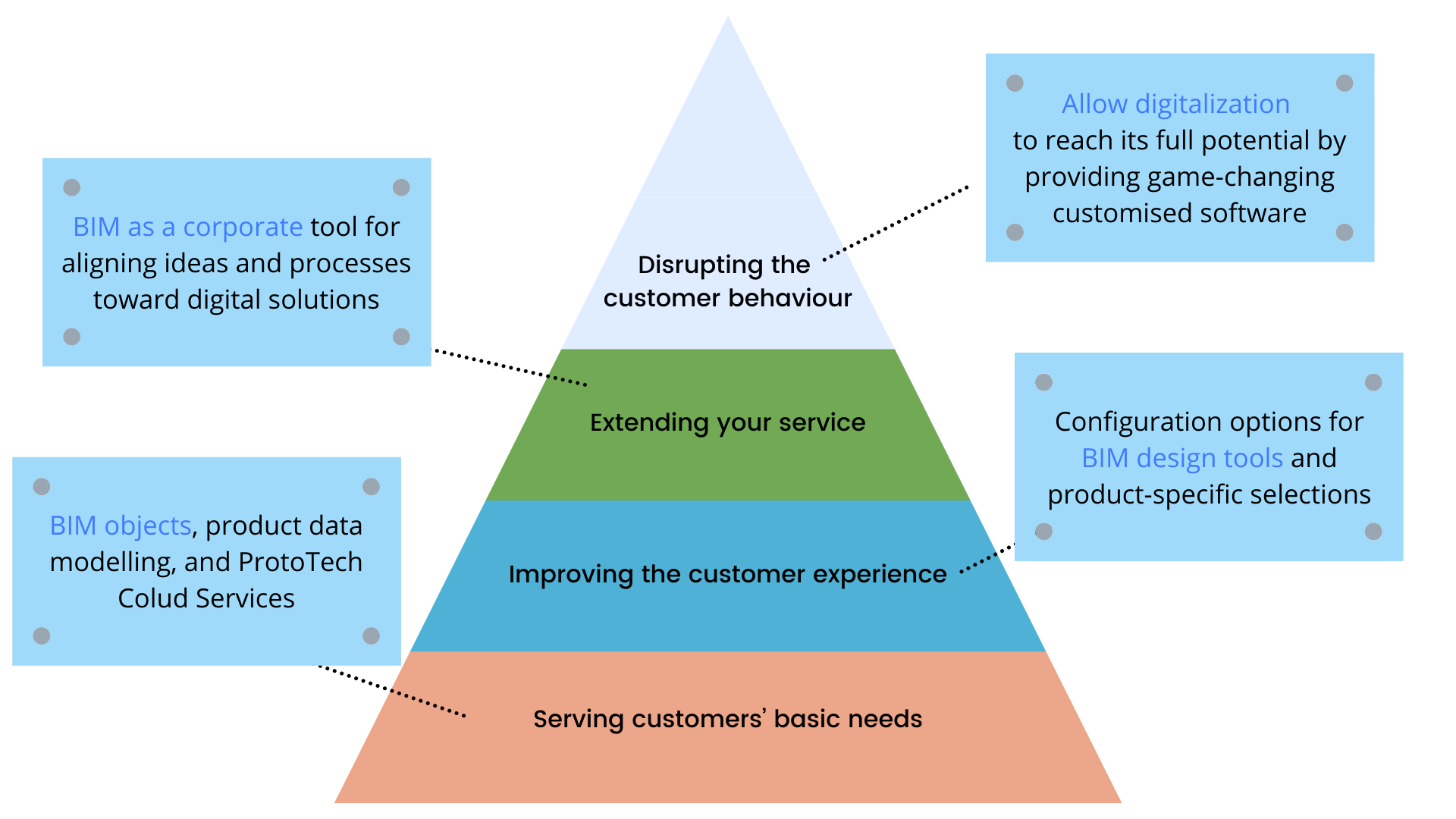Taking advantage of digital transformation for MEP manufacturers
Taking advantage of digital transformation for MEP manufacturers
Have you given any thought to what your organization is doing right now to position itself to benefit from our industry’s digitisation? Most MEP manufacturers have already embraced digital transformation, whether through the provision of BIM models for MEP design or the use of digital technology to improve internal and external stakeholder efficiency. MEP manufacturers can benefit from the digital revolution on four different levels of economic activity.

Fig: Digital Transformation
We all know Maslow’s hierarchy of requirements. Abraham Maslow, an American psychologist, established psychological criteria that underpin human decision-making and motivation. Maslow’s physiological, safety, belonging, esteem, and self-actualisation needs are listed here. Maslow’s pyramid would almost certainly include internet access in today’s world.
In his blog, Järvenpää, the CRO of Vincit, claimed that a simplified version of Maslow’s philosophy might be applied to the digital transformation process. In addition to addressing basic consumer requests, this includes improving the overall customer experience, expanding service offerings, and disrupting client behaviour.
- Making core necessities available to customers
- Increasing the overall level of client satisfaction
- Increasing the number of services you provide your customers
- Disrupting the habits of the target audience is an excellent way to start.
Järvenpää believes that it is impossible to move up the corporate ladder without first achieving the requirements of the bottom rung, or at the very least having someone in the industry do so on one’s behalf. To apply Järvenpää’s theory in the construction industry, we can think about MEP designers as end-users and how digital transformation can assist MEP manufacturers in providing services to these designers.
The digital transformation hierarchy for mechanical, electrical, and plumbing (MEP) manufacturers

Fig: Hierarchy of digital transformation
Creating digital representations of genuine products through product data modelling is a natural initial step in an MEP manufacturer’s digital transition. In the digital MEP world, meeting customers’ basic demands entails supplying BIM objects to designers. But what constitutes a successful BIM object, and what factors should be considered in product data modelling? Read our previous piece on the top 5 things to consider when purchasing BIM object modelling.
The following phase focuses on improving the user experience and may incorporate digital tools to assist the designer. Product calculators and configurators help in the improvement of the consumer experience. Only if you also have the BIM objects to use with these digital tools does it make sense to provide them. BIM things must be of excellent quality to function well in digital design tools.
Third-level BIM integration occurs when BIM is integrated into a manufacturer’s business, and thinking and procedures are carried out using digital technology. Adding the expertise of a manufacturer to a designer’s project might be as simple as installing a plugin into internal software. Alternatively, producers might use digital technology to engage in active client consultation. In this case, the service goes above and beyond simply providing digital twins and product selection options.
Manufacturers of mechanical, electrical, and plumbing (MEP) products may realise the full potential of digitisation by giving their customers customised software that can revolutionise the industry and disrupt customer behaviour. Therefore, the game-changing technology manufacturer will be the preferred provider for current digital building projects. Consider the possibility of a simulation tool that is compatible with BIM. During the design process, it could calculate and simulate optimal room ventilation. An algorithm would then guide the designer to determine which manufacturer products to use and where to place them. The manufacturer’s online shop may also use this information for quotations, ordering, and shipment to the site, bridging the gap between the digital and real worlds, as described above.
The most important thing to do is to look at your company’s digital transformation and determine how much value you want to provide to customers today and in the future. Järvenpää points out that a higher hierarchy level is not always associated with more business. Each group contributes to the overall value of the chain. Regardless, the transformation is taking place, and you can see evidence of it everywhere. You have the option of taking advantage of it or not.
ProtoTech can support mechanical, electrical, and plumbing (MEP) manufacturers at any point in the digital transformation process. We can model BIM items, build configurators and selection tools, develop plugins to connect them to design software and develop tailored software to meet your specific requirements. What position do you now hold in the organisation’s hierarchy, and are you prepared to advance?
Contact us:
info@prototechsolutions.com
ProtoTech Solutions and Services Pvt. Ltd.

